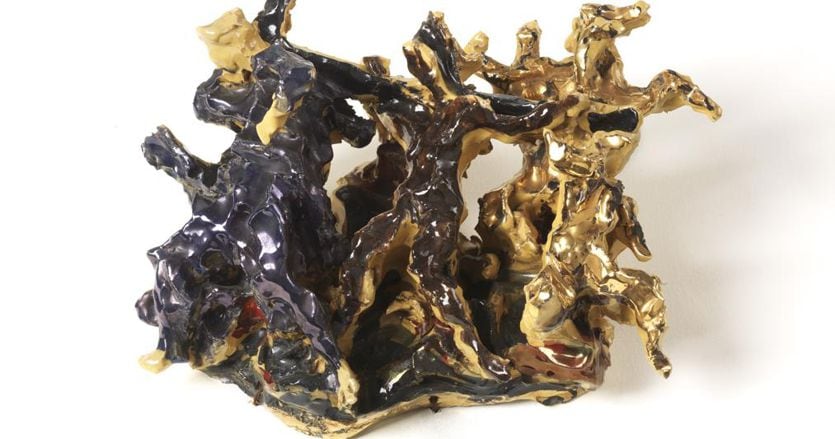Listen to the audio version of the article
When a new Tornabuoni branch was born, the gallery – founded in Florence in 1981 by Roberto Casamonti – opened its programming with Lucio Fontana. It is now a kind of ritual. Once again, with the inauguration of the new Roman satellite – a stone’s throw from Piazza di Spagna, Tornabuoni is dedicating a retrospective to the great artist. The exhibition presents a variety of works that reflect Fontana’s journey towards Spatialism and ends, also visually, at a glance on the extreme wall of the long corridor-telescope, with the glazed terracottas of the Via Crucis (1947). The figures emerge from the background with their excited dynamism. The only ones among the stations that differ in tonality and the static nature of the main subject are: Jesus consoles the pious women – VIII station, 1947 and Jesus dies on the cross – XII station.
The curatorship has always been entrusted to Enrico Crispolti, who passed away in 2018, for this reason it is devoted to his memory and makes use of the critical contribution of Luca Massimo Barbero.
The cuts
The itinerary begins with a gouache on paper, black on a purple background, Ambiente spazio of 1948, therefore of the year following the gestation of Via Crucis. We then move on to the Spatial Concepts of 1953, red and brown on a white background with red glass splinters, of 1956 fat pastel, glasses and holes on black velvet, of 1957 with mixed technique and sequins. Finally, the further step forward: the cuts between 1959 and 1960 begin to take on a “more imperative and solitary character”, as seen in Attese of ’59 where the cutter passes diagonally over the shaped canvas worked with blue water-based paint dark gray or in the sample with three cuts made vertically on the intense orange hexagonal surface. A riot of pictorial material with a baroque character can be found instead in the 1961 Spatial Concept with the green and gold paint distributed on the canvas in cursive furrows and transversal waves through digital pressure; the extremely carnal slit has slightly extroverted edges with the teeth of the cut visible.
As Crispolti writes, Fontana manages to purify “the surface from the material hypertrophy of the Informal” and in the Attese series of 1964-1965 this becomes evident: the cut is increasingly clear and clean, the gash opens onto a black space potentially infinite. Closes the circle Spatial concept. The end of God apple green shaped canvas, particularly bright, part of the series that Gillo Dorfles will define as “the ova”.
In the margin we use his words: “The egg: the germ, the embryo of a new being; but also the spiritual matrix, the microcosm, the form that in itself includes every future existence; and also the Easter egg, the traditional symbol of the Resurrection, the symbol of a double birth. The giant egg: synonymous with the World and Creation: a formative and formative force, which is no longer that of the Sphere with its perfect circumference but that of a sphere that collapses, flattens, tends downwards, heavy, pregnant with its forces included, such as the drop, the seed, the pistil, the alembic”.
